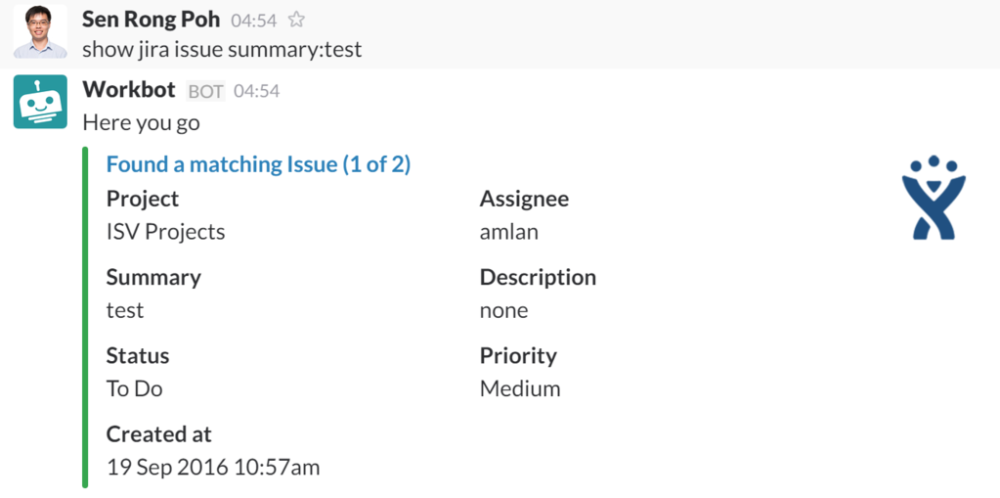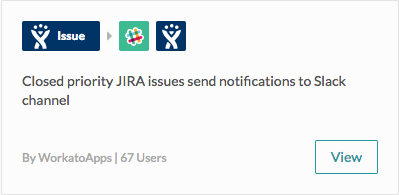More and more businesses are turning to chat apps like Slack to communicate internally and to issue management platforms—like JIRA—to track issues and bugs. But according to market research firm IDC, companies lose 20-30% in revenue every year due to workflow inefficiencies. Why? In many businesses, teams just aren’t working together as much as they should be.
This situation is especially prevalent between customer-facing teams, such as sales and customer support (CS), and behind-the-scenes employees like engineers. When those teams can’t—or don’t—communicate easily, it can lead to data silos, poor performance, and employee burnout. Teams have to work twice as hard to do their jobs, and that’s bad for everyone.
Companies lose 20-30% in revenue every year due to workflow inefficiencies. Share on XLuckily, you can easily bridge the communication gap by constructing integrated workflows that automatically push information to the teams that need it. The Workato platform lets you easily build workflows by using recipes; each recipe is a plain English list of instructions for getting work done across your apps. We’ve also created Workbot, a highly customizable Slackbot that turns Slack into command center for all your apps, so you can accomplish tasks without leaving the chat console.
With these tools, you can combine JIRA and Slack into powerful workflows that boost overall productivity! From real-time customer notifications to automatic data tracking, here are the top five ways to use JIRA and Slack together.
Receive a summary of JIRA issues in Slack.
Weekly team meetings are unavoidable, and for some departments—like engineering—they’re crucial to keeping everyone up to speed. You might conduct regular status meetings, for example, to evaluate the workload of each team member and to keep everyone updated on issue progress as logged in JIRA. Team members can walk through the issues assigned to them and inform the team about issues they’ve resolved. Routine discussions like these are important for setting correct expectations and creating strategic action plans for the coming week.
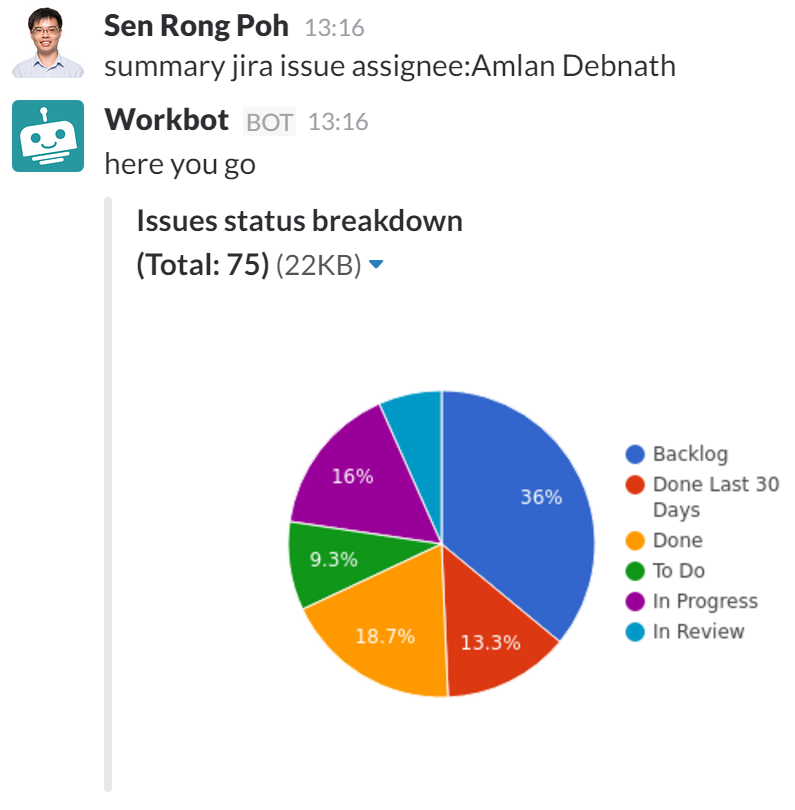
To facilitate this process, you can use a recipe to send a summary of all JIRA issues into Slack as a graph or pie chart. With this recipe, the engineering team can see a 360° view of their assignments in a visual, easily interpretable format. If you want a more granular perspective, you can ask Workbot to retrieve a list of all the JIRA issues assigned to a particular engineer. The bot will automatically organize the data in a digestible format, so you can keep on top of all your work!
Show JIRA issues inside of Slack chats on command.
At Workato, the CS team is also the front line of response for more complex tasks, such as troubleshooting. But because they’re not tech experts themselves, our CS agents frequently need to liaise with the engineering team to discuss a specific customer’s issue.
We wanted to give both teams an easy way to access the right information in JIRA with minimal manual effort. To solve this problem, we created a recipe that pulls all data from a JIRA issue into a Slack channel or direct message (DM). Instead of jumping between apps, both teams can quickly retrieve the information they need in a matter of seconds. If a CS agent types “show JIRA issue summary,” for example, a summary of the JIRA issue—including the date created, ticket priority, name of assignee, and ticket status—will display in Slack. There’s no need to access JIRA in a separate window, so there’s no chance to get distracted or discombobulated due to context-switching!
Receive a Slack notification whenever a customer is assigned to you in JIRA.
Account-based marketing (ABM) has revolutionized how businesses sell their products—and themselves. Today, businesses can make pretty much any function account-based, including customer support.
Account-based customer service (ABCS) can help you maintain contact with high-value or high-volume customers, which is key for customer retention and upsell. But there are two big hurdles to implementing ABCS effectively. First, CS agents must be notified of their account assignments in real time; otherwise, they’ll be slow to follow up with customers. Second, they need an easy way to manage these notifications once a customer project is completed.
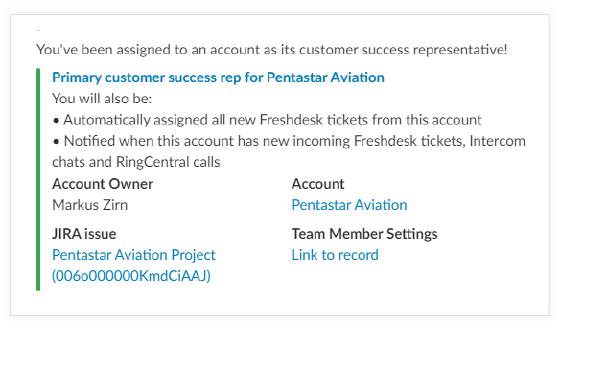
Receive a notification in Slack for every closed JIRA issue.
In an ideal world, your CS team would know right away whenever the engineering team resolves an issue, so they can then communicate that solution to customers. To make that world a reality, you can use a recipe to alert team members of closed issues via Slack.
The recipe picks up on relevant information in the JIRA ticket, so the Slack notification contains everything the CS team might need to know when communicating with a customer about their issue. It will contain details which include who created the project, what task is at hand, and the name of the assigned customer. Using this integration is another way you can turn Slack into a centralized hub to track issue progress and reduce manual labor. With Slack as communications central, the engineering team can rest easy knowing the CS team will be kept in the loop about project progress. And if you’re using any version of account-based customer support, this integration can really help your CS agents follow up with their assigned customers!
Auto-tracking demos with Slack and JIRA for better reporting.
Keeping track of demos is a universal pain point for account executives and salespersons—especially when reps schedule demos in one app (like Calendly) but log all pipeline data in a CRM such as Salesforce. Manually logging demo notes and outcomes isn’t fun; it’s no wonder that sales reps often avoid the task!
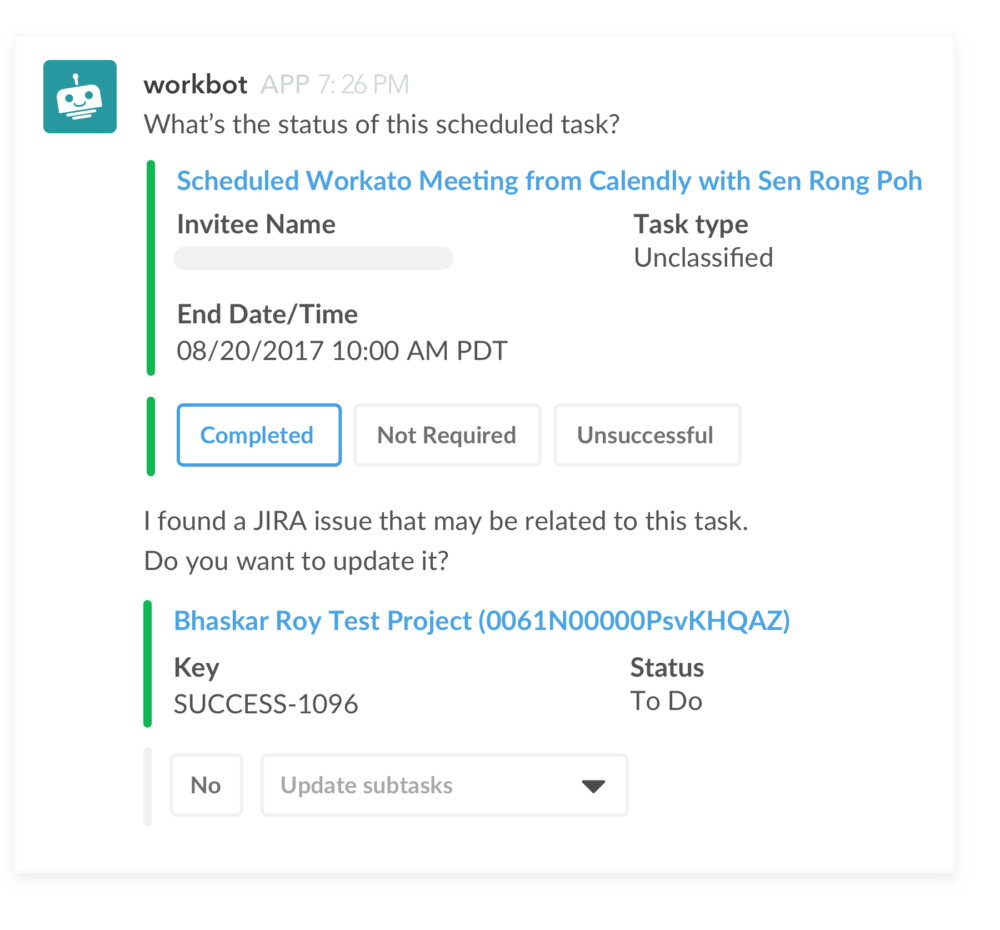
This workflow isn’t just a time-saver for sales reps; by adding another recipe to the process, we made it easy to keep track of customer touchpoints across apps. Depending on which team member gave the demo, Workbot can also prompt different follow up queries. If a CS agent demoed a lead, for example, and that lead also has a JIRA issue open, Workbot will ask if they want to update the JIRA issue via a Slack dropdown menu. All updates are automatically synced to JIRA.

